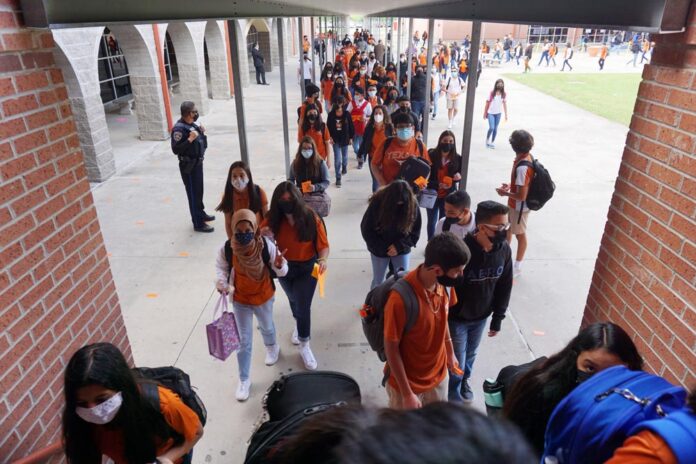
Rio Grande Valley schools made a noticeably resilient showing academically to the results of the pandemic, a nonprofit reported in November.
Children at Risk, a nonprofit that researches child poverty and inequality, examined over 8,000 schools statewide, ranking schools with 75% or more students from low-income families that have been high performance historically and have done well during the pandemic.
Of the organization’s top 10 schools in that category, a full 70% are in the Valley.
Valley schools accounted for four of the top 10 middle schools and three of the top 10 high schools.
In a November discussion on results for West Texas and South Texas schools, Children at Risk CEO Bob Sanborn described the results as enviable.
“I have to tell you guys, it always drives people in San Antonio crazy when I talk about the overperformance of El Paso and the Rio Grande Valley, because you guys do so well,” he said.
That envy, Sanborn said, is the result of success.
“We really see a lot of over performance in El Paso, in the Rio Grande Valley,” he said. “We have seen historically activists, superintendents, principals and school leaders that are really engaged, and it’s something that we like to see and that we would love to see reflected in the rest of the state.”
Hidalgo County’s own PSJA Early College High School in San Juan was ranked in the top spot of pandemic resilient Texas high schools.
The school’s principal, Alejandro Elias, said during that November discussion that of the school’s 2,300 students, 94% are economically disadvantaged and 50% take at least one college course.
“The culture is one where we expect every student to go to college, for them to get that post-secondary education,” he said. “And we do that work by connecting them to different institutions out there.”
Elias said his campus faced pandemic challenges with his adapting to technology, a challenge he says his employees met.
“And of course we’re data driven at this campus, and that of course helps us to choose what research-based strategies we want to use so that our students can be successful and achieve,” he said.
Campuses in Roma ISD and Mission CISD also performed well in Children at Risk’s rankings.
“I am amazed and proud of the hard work our faculty and staff at Roma ISD put into helping our students continue to thrive during the pandemic, and these rankings show that we are success-focused at Roma ISD despite what obstacles may lie in our way,” wrote Roma ISD Superintendent Carlos Guzman, who had five of his campuses highlighted in the report. “I want to thank all the teachers and staff for everything they have given of themselves to keep our students on track, determined to attain excellence in all they do. I want to thank our students for their determination and hard work; they are exceeding expectations and showing their full potential. I also want to thank our dedicated parents for their support of our mission and vision at Roma ISD — nothing is possible without you.”
Mission CISD also had a junior high recognized for its pandemic resiliency.
“We are very proud of the accomplishments at Cantu Junior High School,” wrote Superintendent Carol G. Perez in a release. “The challenges for all our schools have been great and we have been focused on closing the learning gaps caused by the disruptions in our learning processes. To see that the efforts at Cantu Junior High has earned them state recognition, is an example of what is taking place in all our schools to recover from the pandemic.”
In total, 233 schools of the 583 schools in the organization’s Valley region of South Texas were rated as being pandemic resilient.
On a less jubilant note, Children at Risk ranked 56 of those schools as “Red Flag Schools,” schools that have been high performing but show a concerning impact caused by the pandemic.
More details on the research are available on the Children at Risk website.



